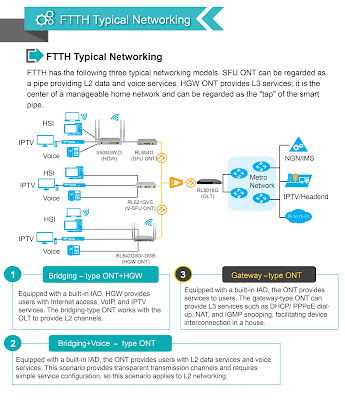Five key points of FTTH construction
1. Location of the position of the splitter
In passive optical networks, the location of the splitter plays a crucial role in the implementation of the project. The splitter is a passive device that works without a power supply, so there are not many concerns in site selection and installation, just pay attention to the pipeline and user distribution. The location where the beam splitter is installed is generally not placed in the equipment room, and is usually selected in a light distribution box that is relatively close to the user and is densely populated by surrounding users. If the splitter is installed in the equipment room for centralized splitting, the advantages of PON are not reflected at all.
2. The location of the machine room
In a pure FTTH project, you may need up to one machine room. Because the construction of the computer room involves power taking, management, operation, backup power, air conditioning, etc., it will greatly increase construction costs and operating costs. Usually, the operator will not set up the FTTH room in any community unless the nearby computer room is too far away from the user. Currently, operators usually install optical distribution boxes or fiber optic cable connector boxes in the community at most.
3. Concentrated spectroscopic
Operators typically perform concentrated splitting outdoors where they are close to the user. This is a kind of protection for investment, and the expansion of the optical splitter can be performed according to the situation of the user opening. In other words, when the number of users in the early stage is relatively small, you can buy a little light splitter. As the number of users is turned on, the number of splitters is gradually increased. However, it is recommended to consider sufficient expansion space when designing in the early stage.
4.Reduce the type of fiber optic cable
In order to facilitate implementation and management, more than two types of fiber optic cables (excluding home-made cable) are not used in a well-designed passive optical network. This cable mainly refers to the central machine room to the user distribution box. In Rosenberg's project, up to two fiber optic cables can be used from the central computer room to the floor distribution box. Reducing the type of fiber optic cable will help to determine the length of the cable to be used, which will help manufacturers to provide quick response capability and competitive price.
5. Easy to expand
At present, the split ratio of EPON or GPON can be 1:64. In other words, a PON of a central office device can have 64 users. According to the standards of 10G-EPON and 10G-GPON, the split ratio will reach 1:128. However, in the current implementation of the operator, the split ratio is not directly achieved in the project by 1:64, and the commonly used splitter is 1:32. Using a split ratio of 1:64 means that the average bandwidth per user of EPON can only reach 16M.
If users generally need to increase bandwidth, it will be stretched. According to the standard of high-definition digital television, to achieve 1080P-level program transmission on the network, the required conservative bandwidth is 22M. If the current universal configuration requires users to increase the bandwidth to 20M or 30M, the existing network will not be able to meet the needs. The active network equipment needs to be upgraded to the 10G network. The upgrade must result in the existing Waste of assets and huge reinvestment. Therefore, it is generally recommended to consider the user's 1:32 optical splitter, which can effectively extend the service life of the current network and provide customers with a better return on investment.
 |
| RicherLink FTTH Solution |
The key elements that the FTTH project must follow are the five above. Readers should consider these five factors when implementing the FTTH project to improve the quality of the project.


评论
发表评论